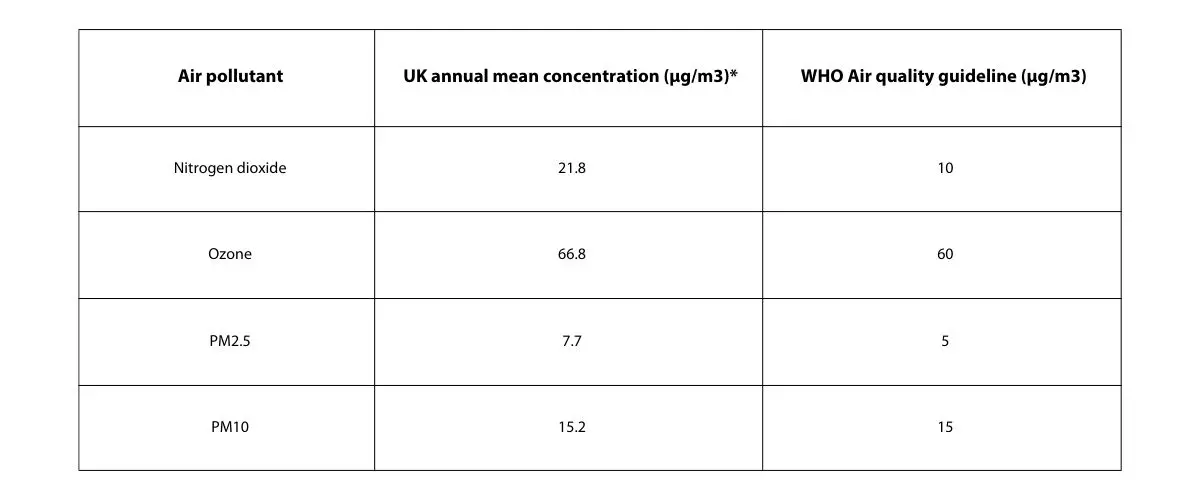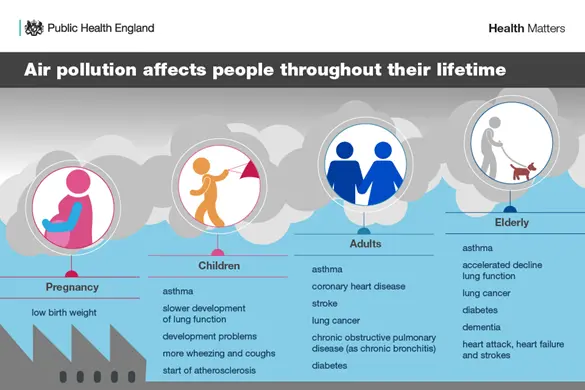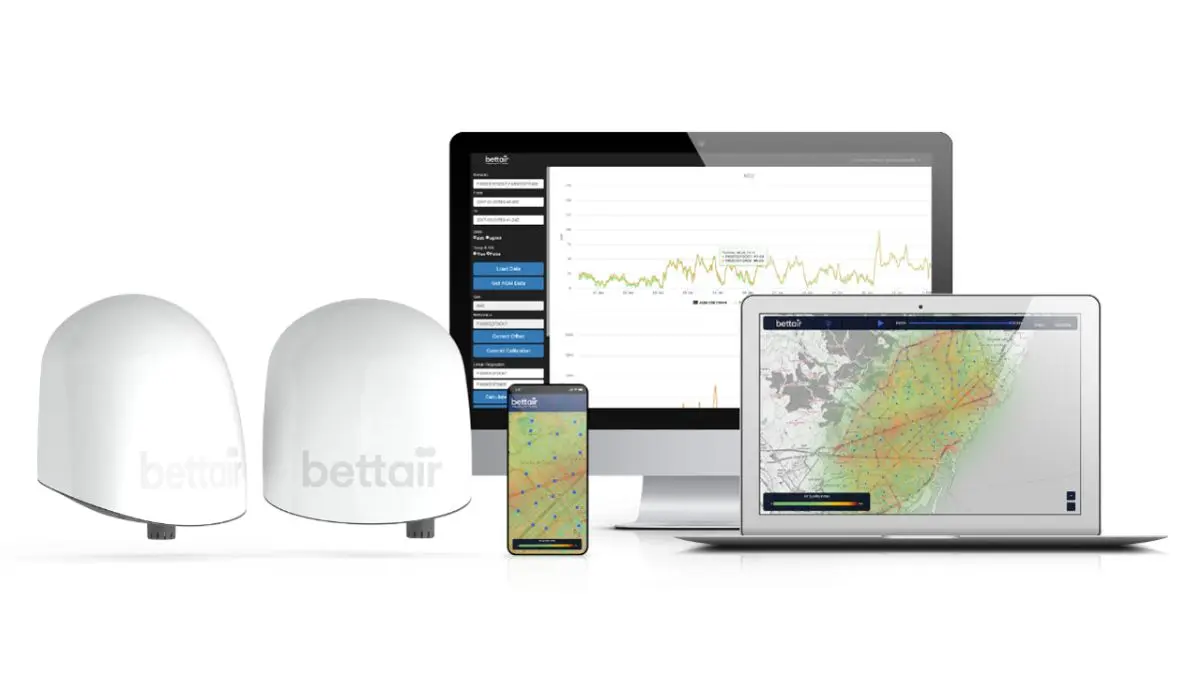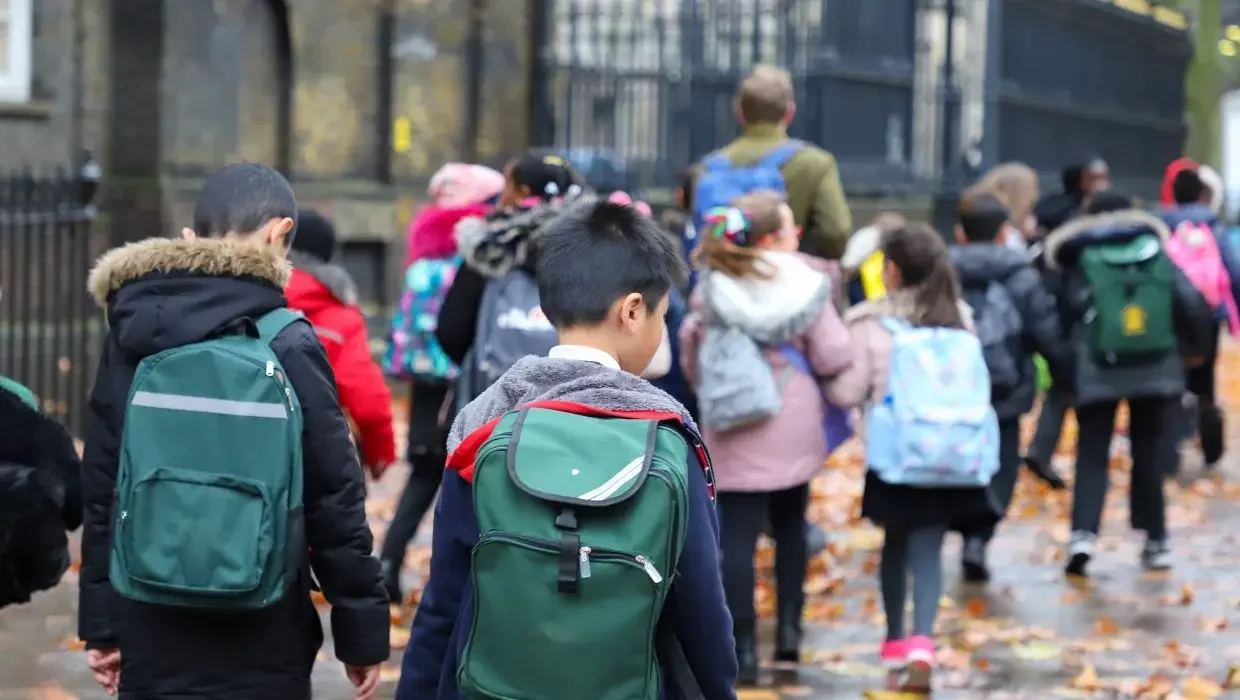What is air quality?
Air quality is the overall condition of the air around us. It refers to properties such as healthiness, visibility, or smell. It’s related to air pollution, which we defined in our blog on air pollution in cities. Essentially, air pollution is the presence of substances in air that are harmful to the health of ourselves or the environment.
The government’s Department for Environment, Food, and Rural Affairs (DEFRA) use the Daily Air Quality Index (DAQI) to inform people about air quality in their local area. It takes into account levels of five common air pollutants: nitrogen dioxide, sulphur dioxide, ozone, and tiny particles that are less than 2.5 or 10 micrometres in size (PM2.5 and PM10).
Whether you’re a teacher, work at a school, a student, or parent, here are 8 reasons why air quality should be a priority for your school this year:
1. It’s a pressing problem…
Although levels of most outdoor air pollutants have been falling, comparison of the government’s annual data on the air pollutants “thought to have the greatest health and environmental impacts” with the WHO’s Air Quality Guidelines shows that all exceeded target levels at urban roadside sites in 2023. The table below shows these data.

However, air quality isn’t only an issue in urban areas. Surprisingly, ozone concentrations are often higher in rural locations. This is because of the role of other key air pollutants in ozone’s molecular cycle, meaning that it is actually degraded more readily in towns and cities. This, combined with the fact that agriculture is associated with another key air pollutant, ammonia, means that all schools should be alert to the issue of air quality, no matter their location.
Finally, air quality is a growing concern due to the effects of climate change. Changes in weather patterns will alter how pollutants are dispersed and removed. For example, hotter, drier days will lead to more stagnation events and greater accumulation of harmful pollutants in the spaces young people use.
2. …that not many people understand
A 2022 special report by the European Commission found that 60% of Europeans do not feel informed about air quality problems. Two health researchers attribute this partly to the complexity of air quality science and the perception that air pollution does not affect “healthy” individuals. However, air pollution can affect anyone, at any time during their life. As places of learning, schools are well placed to fill these knowledge gaps. Furthermore, an awareness fostered during an individual’s schoolyears should remain with them for life, and can even be passed on to their local communities.
3. It affects young people’s physical health
Young people are especially vulnerable to the effects of air pollution. This is because they have a higher intake of contaminants relative to their body weight; they often spend more time outdoors; and their bodies are still developing.
Once inhaled, air pollutants enter the respiratory tract. A child’s lung function – the ability of their lungs to absorb vital oxygen – grows with them. However, injury and inflammation as a result of air pollution compromises this process. In particular, this will make the child less resilient to lung disease in the future. Air pollution is also associated with asthma, where the airways supplying the lungs become inflamed, leading to coughing, wheezing, chest tightness, shortness of breath, and discomfort.
However, air pollution does not only affect the respiratory system. Systemic inflammation and direct entry of air pollutant particles into the bloodstream can impact cardiovascular health, for example, blood pressure and the possible buildup of deposits in blood vessels. The brain can also be affected. A 2024 academic review found that air pollution may be associated with changes in the volume and thickness of different parts of the childhood brain, their inter-connectivity, as well as changes in the structure of individual brain cells.

Image source: Public Health England
4. It impacts mental wellbeing
Studies have linked exposure to certain common air pollutants with symptoms of mental health disorders such as depression and anxiety. The mechanisms of this can be both direct, such as the air pollutants triggering dysregulation of hormones, inflammation, chemical stress, or toxicity of nerve cells, or more indirect and psychological in nature. For instance, living in an environment that you feel is polluted and damaging to your health can equally lead to poor mental wellbeing.
5. It can reduce academic performance
The changes in the brain caused by air pollutants can also impact a child’s studies. A 2022 review of academic research linking air pollution from traffic (one of the foremost causes of polluted air) with academic performance of primary school children found negative associations with behaviour, attention span, memory, and test scores. Later, in adolescence, pollution exposure has had a significant effect on non-completion of high school in the US.

6. It’s on the government’s agenda for schools
The Department for Education has a dedicated sustainability and climate change strategy for schools which, among other goals, aims to equip young people with the knowledge and skills to create a more sustainable future, and ensure a better environment for young people in and around educational settings. The strategy states that, by 2025, all educational establishments should have a nominated sustainability lead(s) and a detailed plan for sustainability initiatives. Within this overarching agenda, air quality regularly appears as a key topic.
7. We have the tools
Tools exist that can empower schools to understand their ambient air quality and make improvements that better the health of students, staff, and the environment alike. One of the most accurate is the bettair® node. This market-leading device can measure concentrations of all of the pollutants mentioned in this article plus more, such as carbon monoxide, hydrogen sulphide, and volatile organic compounds (VOCs), as well as other environmental parameters including noise, temperature, and humidity. These real-time, location-specific data can then be easily viewed, interpreted, and utilised to make decisions which are contextualised and evidence-based. The bettair® node’s measurements have an accuracy comparable to those of traditional air quality monitoring stations but can be taken at a fraction of the cost with a compact, portable, easy-to-use instrument that requires no maintenance. The bettair® node is exclusively available in the UK and Ireland from Enviro Technology.

8. Simple solutions can make a big difference
Even basic interventions can dramatically decrease a child’s exposure to air pollution. One example is to simply encourage a (safe) change of route for the school commute. As another example, in the US, one study found that an anti-idling campaign consisting of educational presentations and driver pledges reduced concentration of PM2.5 at one school by 75%. Often interventions are grounded in behavioural change and communication – so don’t need to be resource-intensive. The US study also highlights the importance of air monitoring and data collection so that changes can be assessed objectively – the bettair® node is ideal for this.
Contact Paul Norman to find out more about the bettair® node.




